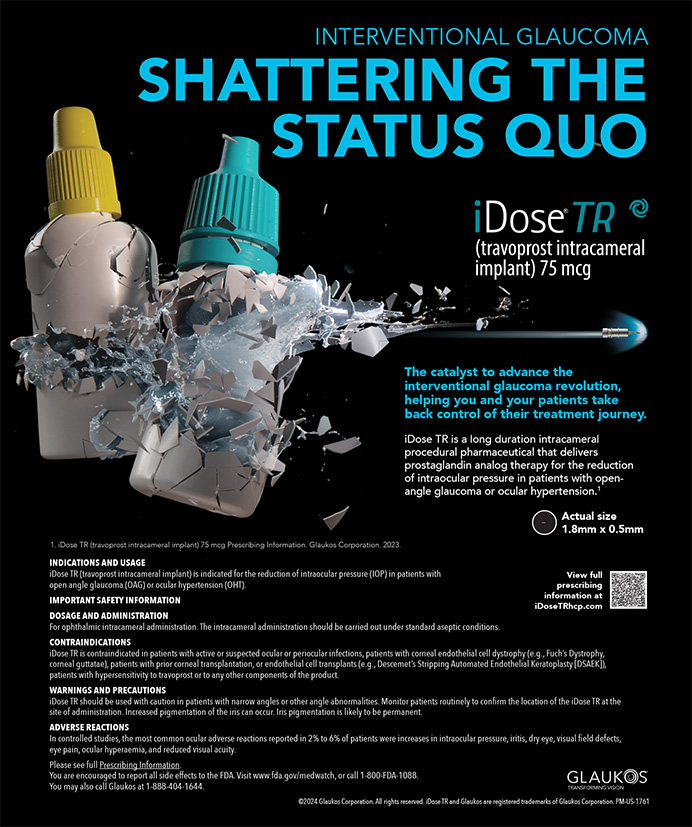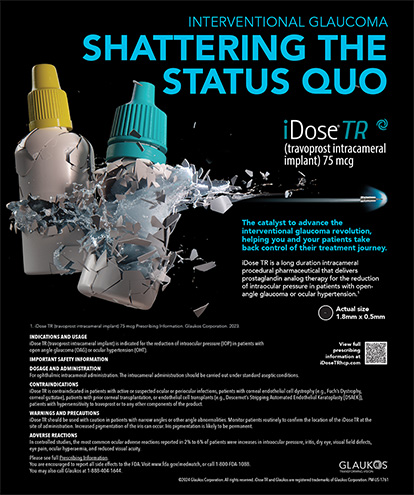For years, we surgeons have relied on astigmatic keratotomy or limbal relaxing incisions (LRIs) to reduce corneal astigmatism at the time of cataract surgery. With the advent of the single-piece acrylic toric IOL, we now have an option that is more predictable and stable. The FDA study for the AcrySof Toric IOL (Alcon Laboratories, Inc., Fort Worth, TX) demonstrated that 97 of patients who had at least 1.00 D of astigmatism preoperatively no longer wore glasses for tasks at distance after the lens' bilateral implantation.1 Based on my own clinical experience, these IOLs satisfy patients more than ignoring their preoperative astigmatism or attempting to correct it with LRIs. The AcrySof Toric IOL's accuracy and its ease of use make it a good choice for those surgeons who are reluctant to perform LRIs at the time of cataract surgery. Additionally, ophthalmologists who have yet to enter the refractive IOL market may agree that the high degree of patients' satisfaction with these IOLs makes them an ideal introductory technology. The following pearls offer readers guidance on adding the AcrySof Toric IOL to their surgical armamentarium.
PATIENT SELECTION
Almost any patient who has 1.00 D or more of regular corneal astigmatism and who wishes to be less dependent on glasses is a good candidate for a toric IOL. Of course, the surgeon must consider the refractive state of the patient's fellow eye. Even individuals with more than 3.00 D of cylinder will appreciate the reduction in astigmatism that these IOLs can offer.
PREOPERATIVE EDUCATION
I strongly recommend providing patients who receive a cataract evaluation or re-evaluation with a pamphlet describing what astigmatism is and what IOL options are available. When patients discover that they can eliminate their distance glasses with these IOLs, they are eager to find out whether or not they are candidates for this option. Before I began using such a pamphlet, I would spend an inordinate amount of time explaining astigmatism to patients. Now, I simply say that, for the best quality of vision and the greatest chance of limiting their need for glasses after surgery, the AcrySof Toric IOL is their best option.
PREOPERATIVE TESTING
I rely on manual keratometry (K) readings for my toric IOL calculations. One must be certain, however, that the testing is accurate and reliable. I always confirm the manual K readings with those from the IOLMaster (Carl Zeiss Meditec, Inc., Dublin, CA) and corneal topography. Additionally, I like to see that these values make sense compared with the patient's refraction and past glasses prescriptions. If they do not match, I look for a reason why such as dry eye or irregular astigmatism. The reason for the difference may be lenticular astigmatism, but this is not always the case. Occasionally, the offsetting cylinder is not in the lens but somewhere else in the visual system. In these instances, placing a toric IOL may actually make the astigmatism worse. If the numbers do not make sense, I caution the patient that implanting a toric IOL may not produce the desired result, and we may then make a joint decision to forego the technology.
PREOPERATIVE CALCULATIONS
After determining the desired spherical power using a new-generation formula such as the Holladay II, it is time to figure out the toric power and the IOL's axial orientation to achieve the desired astigmatic result. The AcrySof Toric IOL Calculator is available at www.acrysoftoriccalculator.com. The surgeon enters data including K readings, IOL power, intended axis for the cataract incision, and the estimated effect of his cataract incision. For instance, my 2.2-mm temporal incision induces approximately 0.25 D of astigmatism 90° from where I make it. The calculator determines which toric power to use and the best axis for the lens' orientation. The printout includes a colored diagram of the eye showing the incision and the IOL's axis. I strongly recommend hanging the AcrySof Toric IOL Calculator printout in the OR so that it accords with the surgeon's view. I find it helps me to remain oriented during the IOL's implantation.
SURGERY
Prior to surgery, I mark the patient's eye while he is upright to identify the horizontal and vertical meridians. If this step is performed while the patient is lying down on the stretcher, the marks could be off by up to 30° due to cyclotorsion that can occur while the patient is in a supine position. This step can be performed freehand with a marking pen or one of the commercially available premarkers.
Next, I use an axis marker to stain the incisional axis and the intended axis for the IOL's orientation. Of the several instruments now available, I have found the Mastel marker (Mastel Precision Inc., Rapid City, SD) the easiest to use and the most accurate for aligning the marks through the center of the corneal apex.
Surgery is routine up until the IOL's implantation, which requires a little consideration. After injecting the lens into the capsular bag, the surgeon rotates it clockwise until the astigmatic markings on the optic are about 10° shy of the final intended axis. The goal here is not to allow the IOL to rotate past the endpoint axis during removal of the viscoelastic. After evacuating the viscoelastic, the surgeon rotates the implant the last few degrees with the I/A tip or with a second instrument while irrigating with the I/A tip. Alternatively, one can perform the final rotation with an irrigating cannula through the sideport incision.
CONCLUSION
The AcrySof Toric IOL provides patients with a high chance of decreased dependence on spectacles. Its ease of use, predictability, and stability make it ideal for astigmatic correction during cataract surgery. As patients' satisfaction is almost certain with this IOL, it is a great point of entry into the premium IOL market for those surgeons who have yet to take the plunge.
Robert J. Cionni, MD, is Medical Director of the Cincinnati Eye Institute in Ohio. He is an investigator and speaker for as well as a consultant to Alcon Laboratories, Inc. Dr. Cionni may be reached at (513) 984-5133; rcionni@cincinnatieye.com.


